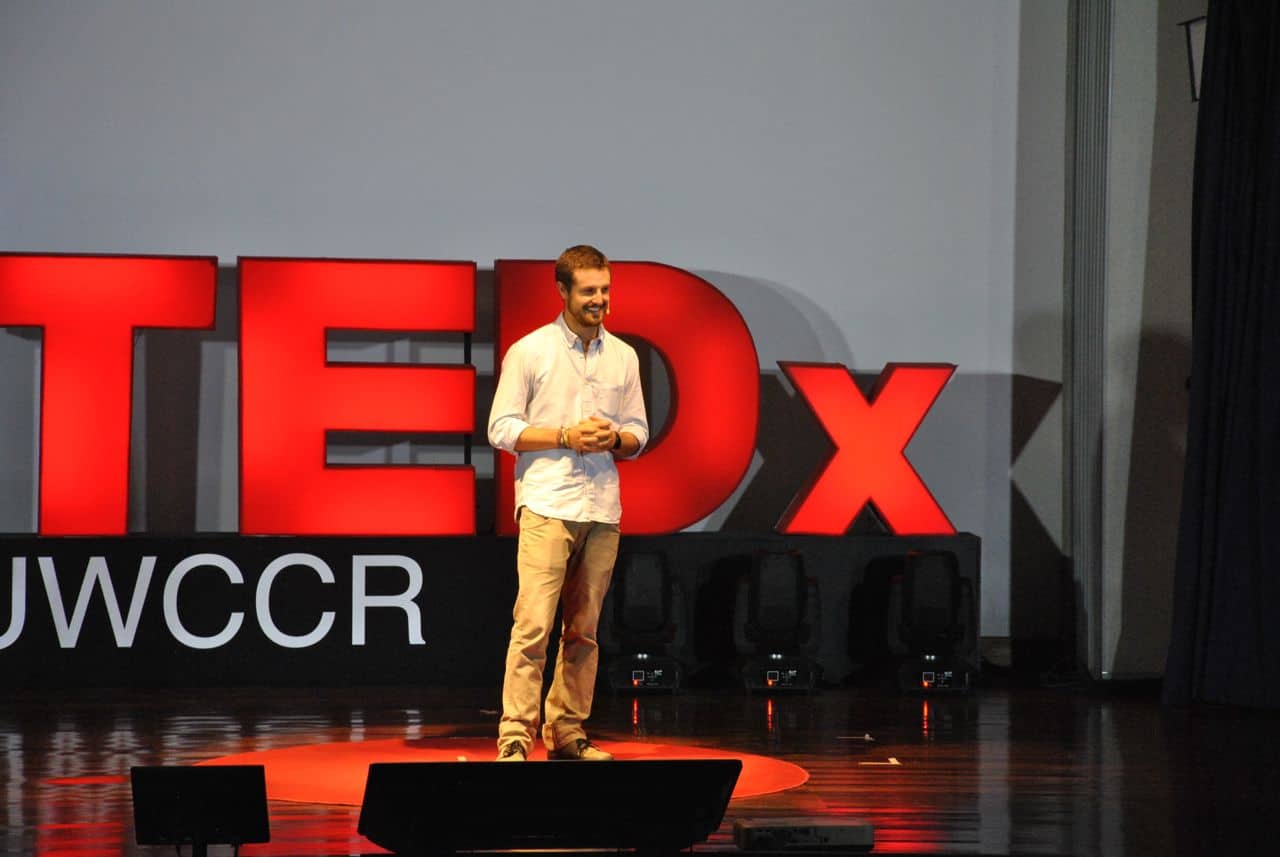“Bienvenidos a TEDx UWCCR!” said a peppy young woman, and her greeting was repeated in English by a fellow emcee. The auditorium erupted with applause, cheers and whistles. People rose from their seats and clapped wildly. So began the TEDx conference organized by United World College and hosted by Universidad Latina in San Pedro on Thursday.
If you had never seen a TED talk before, you might not have believed that an audience could be so enthusiastic about 26 short lectures presented on a bare stage. But there they were, hundreds of TED fans gathered in a dark room at 9:15 a.m., thirsting for “ideas worth spreading.”
Founded in 1984 by U.S. architect Richard Saul Wurman, the conference exploring technology, entertainment and design (hence TED) has grown exponentially in recent years – from a cultish, semi-exclusive lecture series to a populist global phenomenon. Official TED talks are famous for showcasing respected personalities like Bill Gates and Malcolm Gladwell, and recorded presentations are streamed all over the Internet. TEDx conferences like the one at Universidad Latina are independently organized events approved by the nonprofit Sapling Foundation.
“In education, TED is very inspirational,” said Anamaría Álvarez, who works in development at UWCCR and helped curate the event. Of the six organizers, Álvarez was the only faculty member. The majority of participants, including the attendees, volunteers, hosts, and many of the event speakers, were students. Álvarez added that TED’s interest in diversity is consistent with UWCCR’s mission, where students hail from more than 60 countries.
“I was a big fan of TED,” said Michael Flood, a UWCCR student who grew up in Canada. While Flood has seen numerous TED lectures online, he had never attended a conference in person. “I’m extremely excited. It’s kind of unreal.”
To use the TED brand, a TEDx event must adhere to certain requirements, and evidence of the franchise was everywhere: Organizers wore white TEDx T-shirts, while volunteers wore black TEDx T-shirts. All speakers had to be approved for subject and content. A massive TEDx sculpture stood in the middle of the stage, and previous TED lectures were intermittently projected on screens. The emcees reminded the audience that the presentations were being broadcast live all over the world, and TED fans were responding through every kind of social media. Taking pictures wasn’t allowed, but media students photographed every minute of the event, and photos were available on request.
Subjects ranged widely, from Weiru Ye’s exploration of vanishing folk culture in China to Carlos Chiroy’s lecture on human trafficking and sexual abuse.
One speaker, Benjamin Music, is a 19-year-old student at UWCCR. Physically fit and fashionably dressed, Music described his experience growing up in Austria, where he was deeply suspicious of immigrants. “I was a racist,” he confessed. He explained how, at soccer games, his team would insist that rival Turkish players were cheating. Around the age of 16, he entered an international school in Italy, and Music recognized his bigotry. “I realized it was the perfect age to change,” he said.
When Music reached his conclusion, that a growing mind requires freedom, guidance, and support, he asked the audience to chant the three words with him. “Freedom! Guidance! Support!” echoed his listeners.
“Awesome,” Music said, doffing a fist.
The UWCCR event wasn’t the last Costa Rica will see of TED in 2014. The fifth annual TEDx PuraVida will take place at the Children’s Museum on Feb. 27.






